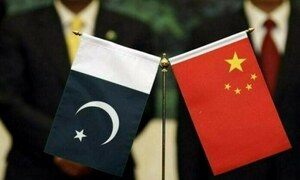The latest Economic Survey had a surprise. The document included headcount poverty index, for FY11. Though poverty numbers are missing for more recent years, this incidence can be called progress after years of parrying.
But the bigger surprise was in the number itself. The government showed the poverty index at 12.4 percent in the period FY11 based on PSLM data of the period. The caveat emptor is that this, and the 17.2 percent headcount recorded for FY08, is an “interim indication of poverty situation in the country”, as noted in the survey’s relevant section. That suggests a possible revision later on.
The household consumption based official poverty line (equivalent of 2350 calories per person per day) is estimated from the Household Integrated Economic Survey. There is a downward trend in headcount poverty in the last decade (see the illustration).
However, one fails to fathom the decline in poverty in the years between FY08 and FY11. There was double-digit inflation during this period, especially in food items. Asian Development Bank noted in 2012 that a 30 percent increase in food prices leads to a 6.7 percentage point increase in poverty for Pakistan. Impact of fuel inflation is besides this. Yet the headcount has reduced as per government numbers. It must be a miracle, if not, a mirage.
“Congratulations to the government on this achievement. At this rate, I fear the poverty headcount would show a negative reading soon,” was how a noted economist responded to this development with a pinch of sarcasm and bewilderment. He attributed such unrealistic numbers to the donors’ desire to show something great for their spending here, and demanded an independent commission to reform the poverty measurement process.
The economic survey attributes the remarkable decline in poverty to social safety nets like the BISP and PPAF, increase in support prices of several major crops over the years, soaring remittance inflows, increasing philanthropy and female participation in rural labor force. But expect economists to dustup over this issue in the near future.
This move by the PML-N government must also be seen in another context. They have now included the debatable poverty numbers of both the Musharaf-era and the last PPP-led government in their economic scorecard. If not an endorsement, this may well be an aside to the political class to take the politics out of the poverty measurement process.
While apolitical poverty discourse is welcome, sticking on with the poverty headcount index would be a mistake due to its shortfalls. There is a need to adopt an indicator that better captures the essence of poverty and provides real-time data for actionable public and private interventions.
Why the federal government decided to publish poverty headcount index (and that too, of the last regime) is a mystery, especially when the Planning Commission has now officially partnered with the Oxford University and UNDP Pakistan to adopt the “Multi-dimensional Poverty Index”. UNDP has been using MPI since 2010 in its annual Human Development Reports.
This partnership hopes to undertake mapping of multidimensional poverty at the provincial and district level. MPI is better than simple headcount because it identifies poverty incidence through looking at multiple deprivations experienced by an individual at a given time. Multiple dimensions are carved out from broad areas of education, health, and living standards, tailored for each country and culture.
BR100
12,121
Increased By
344.9 (2.93%)
BR30
35,374
Increased By
964 (2.8%)
KSE100
113,955
Increased By
2628 (2.36%)
KSE30
34,878
Increased By
885.3 (2.6%)



















Comments
Comments are closed.